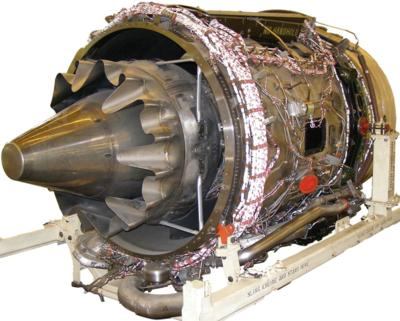Sun, Jul 11, 2021
AD 2021-12-07 Requires Removing Affected HPT Disks From Service Prior To Reaching Specified Compliance Times
The FAA is adopting a new airworthiness directive (AD) for certain Rolls-Royce Deutschland Ltd & Co KG (RRD) BR700-710A1-10, BR700-710A2-20 and BR700-710C4-11 model turbofan engines.

This AD was prompted by an investigation by RRD, which revealed a quality escape during the high-pressure turbine (HPT) stage 1 disk rim cooling air hole manufacturing process. This AD requires removing affected HPT disks from service prior to reaching specified compliance times or at the next engine shop visit, whichever occurs first. The FAA is issuing this AD to address the unsafe condition on these products. This AD is effective August 12, 2021.
Supplementary Information: The FAA issued a notice of proposed rulemaking (NPRM) to amend 14 CFR part 39 by adding an AD that would apply to certain RRD BR700-710A1-10, BR700-710A2-20 and BR700-710C4-11 model turbofan engines. The NPRM published in the Federal Register on January 21, 2021 (86 FR 6271). The NPRM was prompted by an investigation by RRD, which revealed a quality escape during the HPT stage 1 disk rim cooling air hole manufacturing process. In the NPRM, the FAA proposed to require removing affected HPT disks from service prior to reaching specified compliance times or at the next engine shop visit, whichever occurs first. The FAA is issuing this AD to address the unsafe condition on these products.
The European Union Aviation Safety Agency (EASA), which is the Technical Agent for the Member States of the European Community, has issued EASA AD 2019-0299, dated December 10, 2019 (referred to after this as “the MCAI”), to address the unsafe condition on these products.
The MCAI states:
- An occurrence was reported of an HPT stage 1 disc burst on an industrial gas turbine engine. Subsequent investigation revealed a quality escape during HPT stage 1 disc rim cooling air hole manufacturing process. A review revealed that 28 HPT stage 1 discs were subject to a similar quality escape, two of which have been recovered and removed from service. The consequence of this manufacturing error is that the affected parts can no longer safely reach their Declared Safe Cyclic Life (DSCL).
- This condition, if not corrected, may lead to failure of an affected part, possibly resulting in release of high-energy debris, with consequent damage to, and/or reduced control of, the aeroplane. To address this potentially unsafe condition, RRD issued the NMSB, providing instructions to remove the engine from service for in-shop replacement of the affected part.
- For the reasons described above, this [EASA] AD reduces the DSCL for the affected parts, requires identification of the affected parts and removal from service of each affected engine for replacement of the affected part. This [EASA] AD also prohibits (re)installation of affected parts.
You may obtain further information by examining the MCAI in the AD docket at https://www.regulations.gov by searching for and locating Docket No. FAA-2020-1174.
More News
Terminal Radar Service Area Airspace surrounding designated airports wherein ATC provides radar vectoring, sequencing, and separation on a full-time basis for all IFR and participa>[...]
Very High Frequency (VHF) The frequency band between 30 and 300 MHz. Portions of this band, 108 to 118 MHz, are used for certain NAVAIDs; 118 to 136 MHz are used for civil air/grou>[...]
“From approximately November 2021 through January 2022, Britton-Harr, acting on behalf of AeroVanti, entered into lease-purchase agreements for five Piaggio-manufactured airc>[...]
Also: Virtual FLRAA Prototype, IFR-Capable Autonomous A/C, NS-32 Crew, Golden Dome Missile Defense Bombardier announced that the first production Global 8000 successfully completed>[...]
Aero Linx: The 1-26 Association (Schweizer) The Association’s goal is to foster the helpfulness, the camaraderie, and the opportunity for head-to-head competition that is fou>[...]
 ANN's Daily Aero-Term (05.29.25): Terminal Radar Service Area
ANN's Daily Aero-Term (05.29.25): Terminal Radar Service Area ANN's Daily Aero-Term (05.30.25): Very High Frequency (VHF)
ANN's Daily Aero-Term (05.30.25): Very High Frequency (VHF) Aero-News: Quote of the Day (05.30.25)
Aero-News: Quote of the Day (05.30.25) Airborne 05.23.25: Global 8000, Qatar B747 Accepted, Aviation Merit Badge
Airborne 05.23.25: Global 8000, Qatar B747 Accepted, Aviation Merit Badge ANN's Daily Aero-Linx (05.30.25)
ANN's Daily Aero-Linx (05.30.25)



